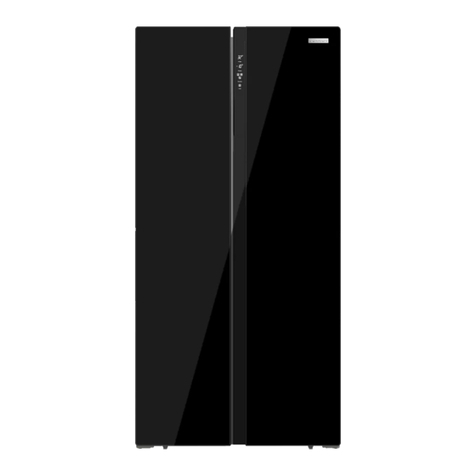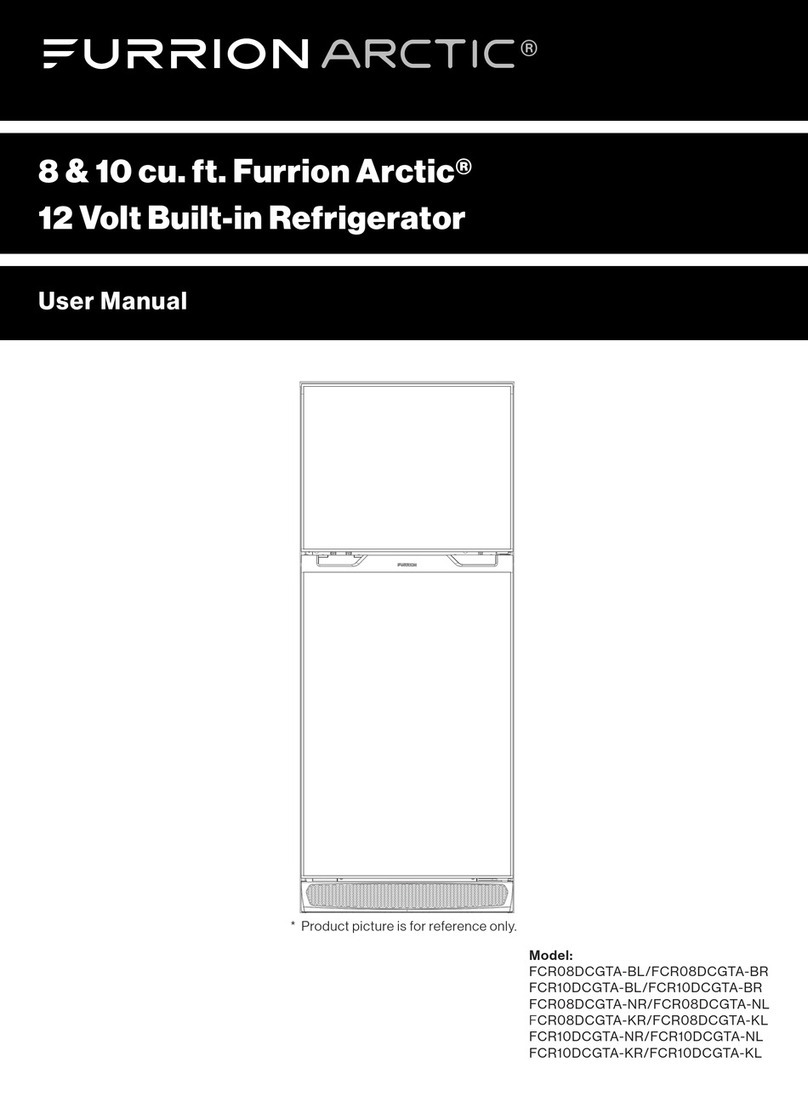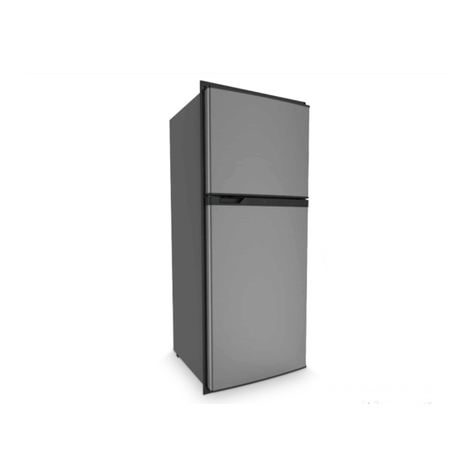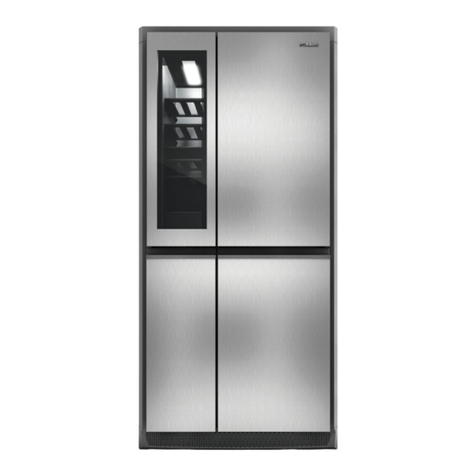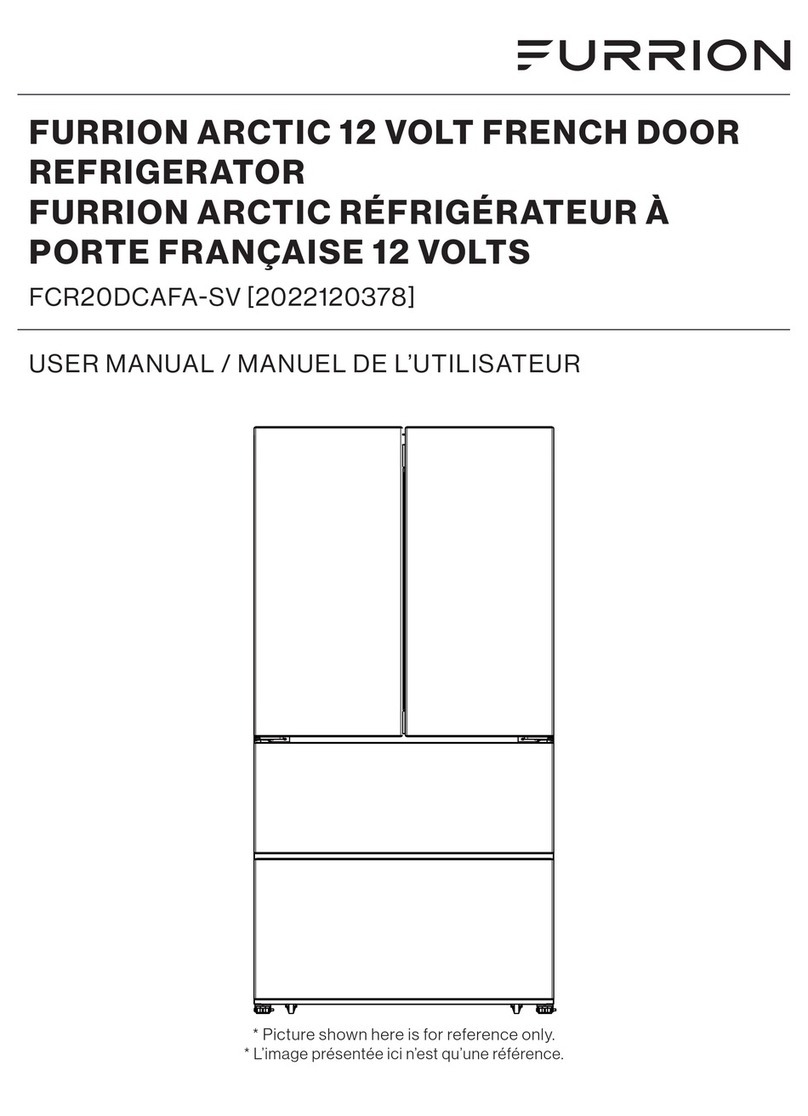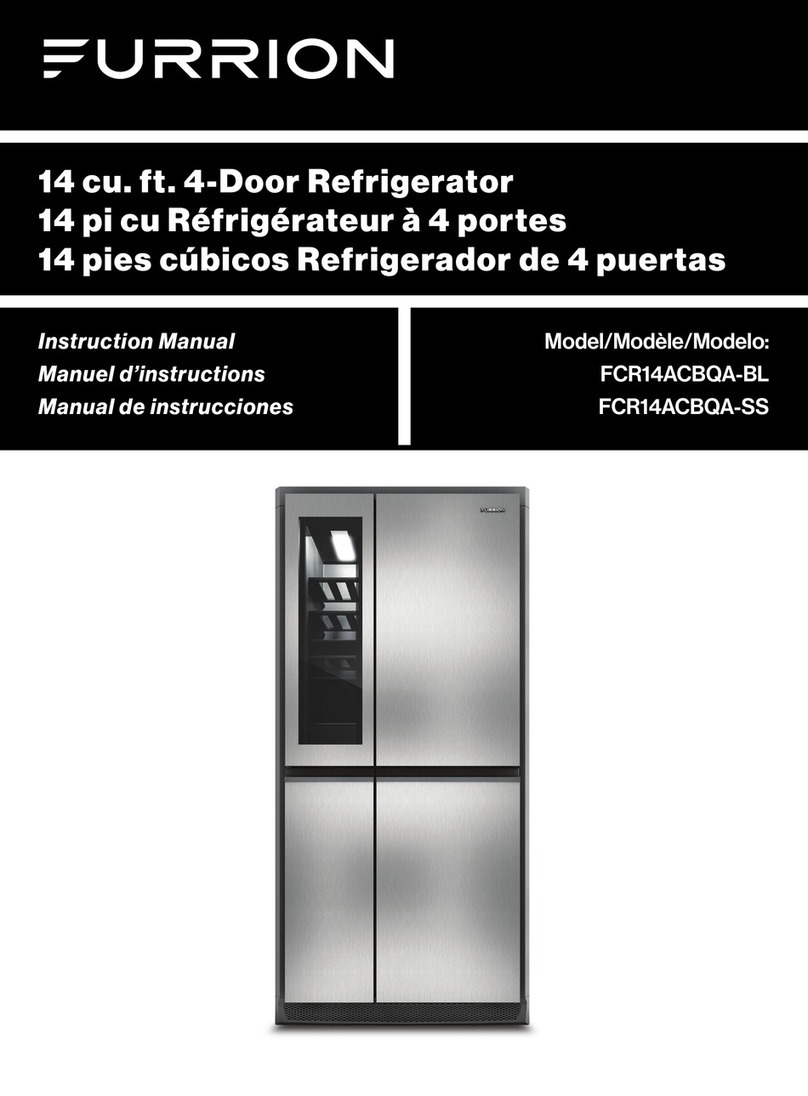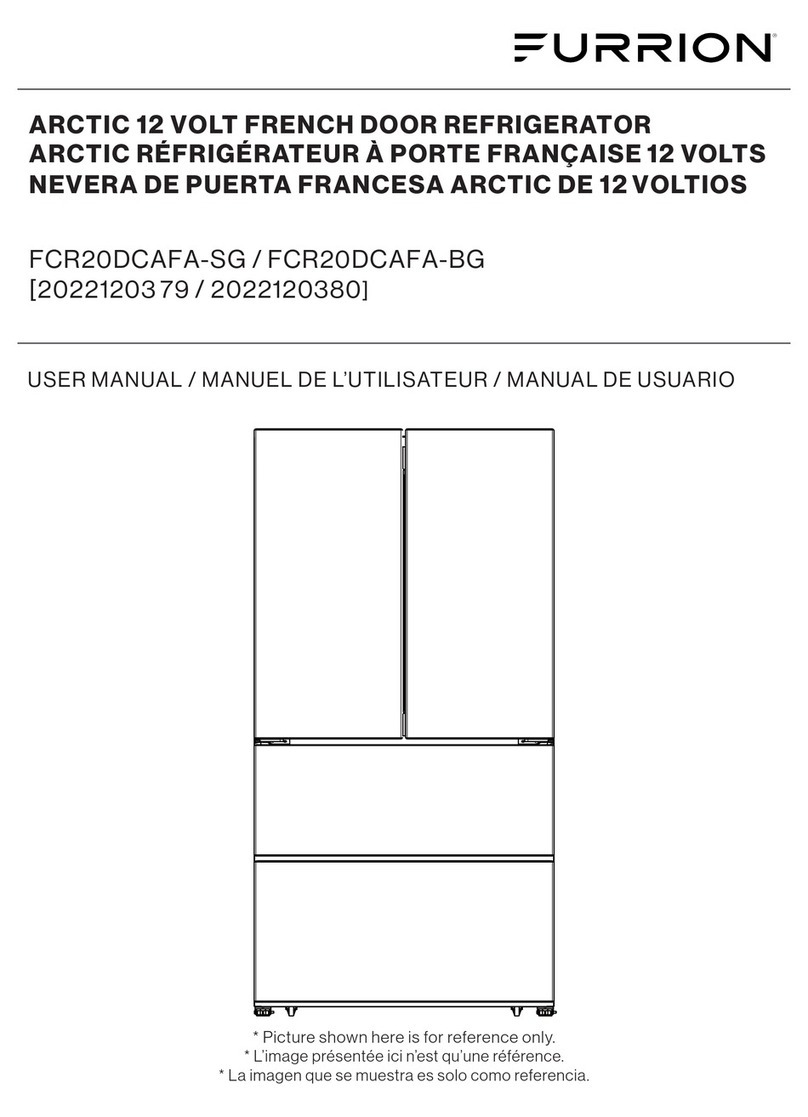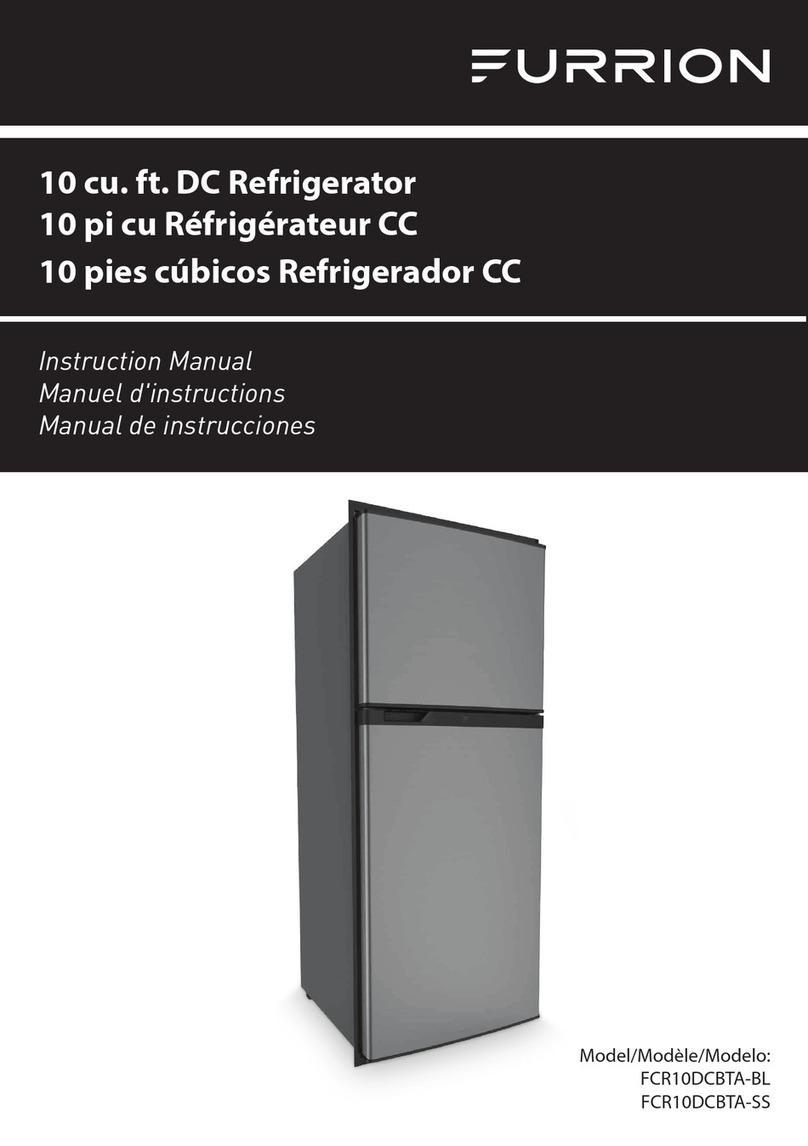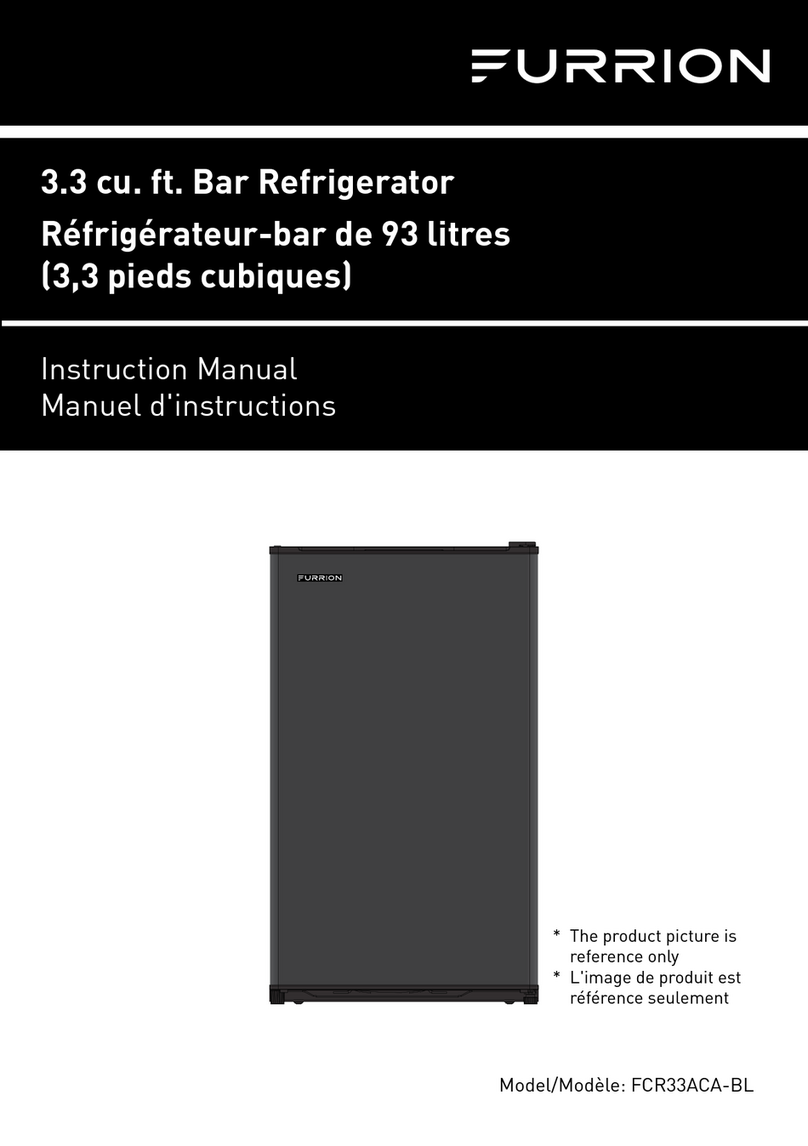
6
English
slope is to allow moisture drainage towards the sidewall
vent.
●The cooling system is a forced air closed loop design,
with inlet and exhaust on the bottom front of the unit. The
enclosure does not need to be ventilated for any purpose.
There is also no need for additional insulation on sides
and top of the enclosure. The enclosure can be treated as
a normal cabinet enclosure of the living space.
●Face surfaces of the cabinet enclosure made from solid
MDF should contain a softwood backing as a skeleton for
mounting support, and to reduce splitting.
NOTE: A softwood core with MDF laminate, or a soft/
hardwood face will be sufficient without a skeleton
backing.
Electrical Preparation
WARNING
●Proper grounding is required for your safety, to prevent
electrical shock or fire. The refrigerator is provided with
the proper grounding for internal electric faults from the
factory. This grounding must not be removed or altered.
●Ensure that the converter or DC power supply is
grounded properly per manufacturers instruction. Per
RVIA the power supply is required to be isolated and
grounded with the Coach Chassis.
CAUTION
This refrigerator will accept voltage levels up to 17V DC
only. Anything other than this, including any AC power will
cause product damage and void the warranty.
●The refrigerator requires a power source that can
adequately provide 10.5 - 17V DC to function properly.
Furrion Recommends Power Center (FCVSWC42A or
FCVSWC54A) and Lithium Battery (FB12I10C) to match
with.
●The refrigerator should be dedicated to a single branch
circuit, and must be fused for 15A minimum.
NOTE:An internal 15A fuse is provided with the product.
This is only intended to protect the internal wiring of the
unit. It will not protect the power source and wiring to the
product and is not to be used as a substitute. The internal
fuse will however allow for a larger rated branch circuit.
NOTE: Sharing power with other devices on the same
branch circuit may cause transient surges and voltage
drops. These interferences may damage or limit
functionally of all devices on the branch circuit.
NOTE: When replacing an absorption refrigerator, the
power supplied is usually shared with other powered
features in the coach, such as overhead lights. A separate
dedicated branch circuit will be preferred to eliminate
flickering during compressor operation.
●The maximum input of the appliance is rated for 11A. All
wiring must follow RVIA and NEC standards based on the
input rating.
●Apply the following wiring guidelines to achieve maximum
performance out of the battery reserve.
Dedicated from the Distribution Box/Panel
Table A
Wire Length to Refrigerator Wire Gauge
Maximum 5ft 14AWG
Maximum 10ft 12AWG
Maximum 15ft 10AWG
Exceeds 15ft and/or main wire feed
exceeds 25ft of 6AWG
See "Direct Connection from
Battery"
*Optional - A pigtail harness of matching gauge can be added to the
refrigerator, however the length must be included in the total.
** Main wire feed required to be 6AWG minimum @ 25ft maximum.
Refrigerator Converter
Wire Length - Reference Tabel A
Mini
Breaker
Battery
Dis-connect
Battery
Distribution
Box/Panel
Main Wire
Feed (**)
Refrigerator
Converter
Mini Breaker
Battery
Dis-connect
Battery
Distribution
Box/Panel
Pigtail
Pigtail Connection
Point (*)
Pigtail Connection
Point (*Optional)
Chasis
Grounding
(**Optional)
Pigtail
Wire Length - Reference Tabel B
Direct Connection from Battery
Table B
Wire Length to Refrigerator Wire Gauge
Maximum 20ft 10AWG
Maximum 35ft 8AWG (*)
Maximum 55ft 6AWG (*)
* The refrigerator will accept maximum 10AWG wire. To connect a larger
gauge wire, utilize a 10AWG pigtail, maximum 5ft.
**Optional - The ground/negative terminal can be connected to the chassis
with the same gauge wire, instead of returning to the battery.
Refrigerator Converter
Wire Length - Reference Tabel A
Mini
Breaker
Battery
Dis-connect
Battery
Distribution
Box/Panel
Main Wire
Feed (**)
Refrigerator
Converter
Mini Breaker
Battery
Dis-connect
Battery
Distribution
Box/Panel
Pigtail
Pigtail Connection
Point (*)
Pigtail Connection
Point (*Optional)
Chasis
Grounding
(**Optional)
Wire Length - Reference Tabel B
●If additional grounding is desired for external faults to the
refrigerator chassis, an external grounding wire can be
prepared and attached directly to the terminal block. The
terminal block is rated for Maximum 300V at 25A.
●Enter service wire into the cabinet space. It is acceptable
to enter through the cabinet floor, sidewall or ceiling.
Ensure that the wire is within the ¼" space provided to the
back of the unit and cabinet.
NOTE: For replacement of an existing refrigerator, the
